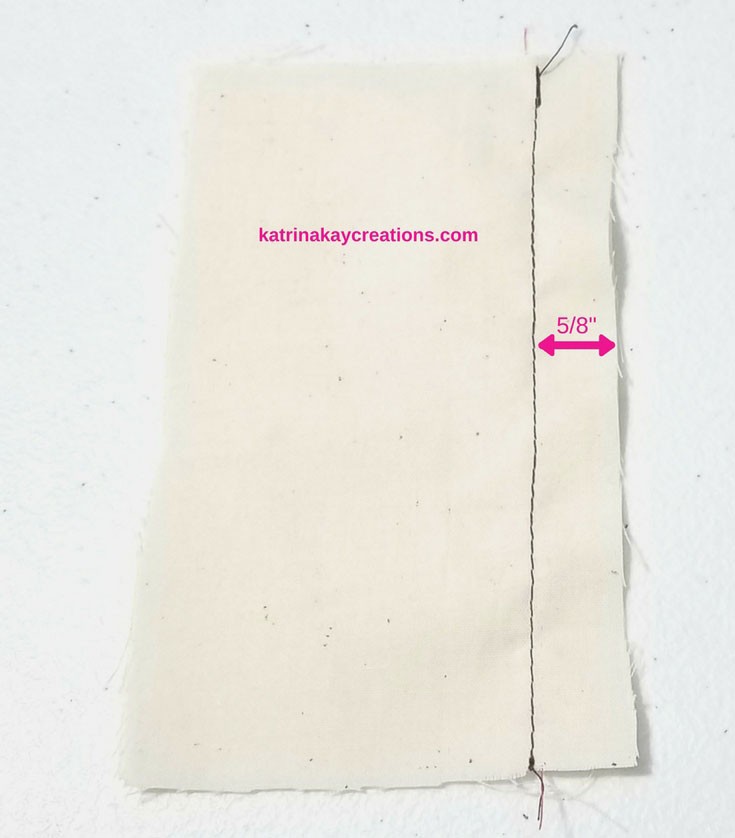Sewing, often perceived as effortless when observed, reveals its true complexity once you’re at the machine, attempting to sew a straight line. Fortunately, seam guides exist to aid both beginners and experienced sewers in achieving accurate seams. This article explores four types of seam guides, their uses, and how they can improve your sewing accuracy.
Achieving straight seams requires practice. Even seasoned sewers often aim for “close to perfect” rather than absolute perfection.
Why is accurate seam sewing crucial? What constitutes a “wrong” seam?
A crooked seam is an incorrectly sewn seam. Additionally, a seam that deviates from the intended seam allowance of your sewing pattern is also considered incorrect.
Crooked seams detract from the overall appearance of your garment, making it look unprofessional. Moreover, attempting to press a crooked seam can lead to ripples and prevent a smooth, flat finish.
Seams sewn larger or smaller than the pattern’s seam allowance can significantly impact the fit of your garment. Even a slight deviation, such as 1/8″, can accumulate. Since seams involve joining the front and back of a garment, this seemingly small difference is multiplied. An error of 1/8″ on each of four seams results in a total alteration of ½” in the garment’s width. This cumulative effect can either add or subtract from the intended size.
While a ½” difference may be negligible in some designs, it can be crucial in others.
I once collaborated with another sewer on creating baptismal robes using a simple pattern with a jewel neckline. My colleague handled the cutting, basic sewing, and facing attachment but couldn’t complete the neckline or hems due to time constraints.
Facing a deadline, I took over the remaining tasks. Upon inspection, I noticed that the neckline seams were sewn with a 1-inch seam allowance instead of the standard 5/8″.
Fortunately, this discrepancy wasn’t a major issue for this particular robe style since only the facing was attached to the neckline. Although it narrowed the neck facing, the topstitching prevented any rolling. However, if a collar had been involved, adjustments would have been necessary.
The key takeaway is the importance of sewing accurate seams along the lines specified by the pattern designer. The following seam guides can significantly assist in achieving this.
1. Throat Plate Guide
The seam allowance is the space between the stitching line and the edge of your fabric pattern. This allowance enables seam construction without altering the final dimensions of your garment.
The pattern manufacturer determines the seam allowance, which can vary. The sewing industry standard is 5/8″. Any deviation from this standard will be indicated on the pattern piece.
Examine your sewing machine’s throat plate; you’ll find guidelines with labeled measurements: 3/8”, 4/8” (or ½”), 5/8” (industry standard), and 6/8” (or ¾”). A ¼” seam is not labeled because it aligns with the edge of the throat plate, closest to the needle.
These guidelines indicate the distance from the needle to your desired seam allowance. To sew a 5/8” seam allowance, align your fabric edge with the line labeled 5/8″.
While helpful, these guidelines can be difficult to see for some. If you find them insufficient, consider the following alternatives.
2. Magnetic Seam Guide
A magnetic seam guide is easily visible and stays securely in place on the throat plate of your sewing machine. You can position it along any seam guideline and easily reposition or remove it as needed. This tool is very helpful for consistent seam allowances.
It’s important to note that magnetic seam guides are generally not recommended for computerized sewing machines. However, if you have a non-computerized machine, this guide can be invaluable for maintaining uniform seam widths.
These guides are widely available online.
Simply align your fabric edge against the magnetic seam guide as you sew to achieve a straight, consistent seam.
3. Nancy Notions’ 6-in-1 Stick ‘N Stitch Guide
Nancy Notions’ 6-in-1 Stick ‘N Stitch Guide assists in sewing both straight and curved seams.
This two-piece guide features a thin adhesive backing, allowing it to adhere to your throat plate. The package includes instructions for restoring the adhesive’s stickiness when it weakens. This seam guide ensures accuracy and ease of use.
Align your fabric against the guide as you would with a magnetic seam guide. However, unlike the magnetic guide, this guide may shift slightly during sewing.
The pieces can be used together for a longer guide or separately. They are also easy to remove and reposition for different seam allowance widths.
This seam guide also includes a thin, plastic template with grid marks for commonly used seam allowances, ranging from ¼” to 1-1/2”.
While Nancy Notions’ 6-in-1 Stick ‘N Stitch Guide is more expensive than other seam guides, it offers versatility. Fortunately, there are alternatives like the next seam guide.
4. Painter’s Tape
Painter’s tape provides a brightly colored and easily visible seam guide. You might even have some on hand already. It’s far more noticeable than the guidelines on your throat plate. It is a cost-effective and readily available option. Painter’s tape also comes in various widths, so you can choose a width that works best for you.
Washi tape can also be used, and it comes in a variety of colors and designs.
You can even mark the tape to indicate where you want to focus while sewing, allowing you to avoid constantly looking at the machine needle.
Conclusion
Seam guides are essential tools for achieving accurate and consistent seams in sewing projects. Whether you opt for the built-in throat plate guide, a magnetic seam guide, the versatile Stick ‘N Stitch Guide, or the budget-friendly painter’s tape, incorporating a seam guide into your sewing process can significantly improve the quality and appearance of your finished garments. Experiment with different types to find the one that best suits your needs and sewing style. Consistent use of a seam guide not only enhances accuracy but also builds confidence, making your sewing experience more enjoyable and rewarding.
